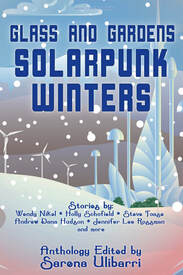 Guest Blog by Steve Toase Sometimes events just slot together perfectly. Back at the start of 2019 I pitched for a writing project looking at different ways of addressing climate change. As part of my application I put forward several ideas, one of which was inspired by penguins. Penguins have really efficient methods of managing their ambient temperature. The structure and arrangement of their plumage, with large feathers and soft down beneath, allows the bird to trap air creating a pocket of insulation. If the temperature rises then the feathers can be opened further to allow the air to circulate and carry away excess heat. When it comes to Adélie in "The Fugue of Winter," the need for silence means the feathers are lowered, removing the air pockets, and in effect removing the city's insulation. In Adélie, the feathers themselves are created from grown keratin. In reality keratin (the protein in feathers and hair) is a vast untapped resource, particularly as a result of human grooming. Every time we clean our hairbrush strands of keratin are thrown in the rubbish. Maybe they could be used to create these feather superstructures to help regulate building temperature? In Adélie a second method is used, where synthetic cells mimicking kerantinizing carcinomas (hair producing tumours) are used as organic 3D printers to manufacture the fibres needed to create the feathers. This echoes the structures seen in the work of artists such as Jennifer Willet, with her project BIOTEKNICA. While the feathers are the main focus of the story, there is a second method of temperature regulation. The walls of Adélie are constructed of an inner and outer flexible skin. Between these membranes, cleaned fat from the city's sewerage system is pumped in to act as subcutaneous layer of insulation, which again mimics penguin anatomy (okay, not the pumps, but the layer of blubber). The advantage of this for the Adélie is twofold. Firstly, it keeps Adélie warm and insulated from the ravages of the hostile conditions outside. Secondly, it keeps the sewerage system free of fatbergs, allowing other waste to be disposed of more efficiently. In Adélie the community has found ways to live with its waste, and use it to help the community survive. Maybe that is something we will all need to consider in the future, as well as being inspired by penguins. Steve Toase lives in Munich, Germany. He writes regularly for Fortean Times and Folklore Thursday. His work appeared in The Best Horror Of The Year 6, and two of his stories have just been selected for Best Horror of the Year 11. He also likes old motorbikes and vintage cocktails.
0 Comments
Your comment will be posted after it is approved.
Leave a Reply. |
World Weaver PressPublishing fantasy, paranormal, and science fiction. Archives
February 2024
|
- Home
-
Books
-
All Books
>
- Beyond the Glass Slipper
- Bite Somebody
- Bite Somebody Else
- Black Pearl Dreaming
- Cassandra Complex
- Causality Loop
- Clockwork, Curses, and Coal
- Continuum
- Corvidae
- Cursed: Wickedly Fun Stories
- Dream Eater
- Equus
- Fae
- Falling of the Moon
- Far Orbit
- Far Orbit Apogee
- Fractured Days
- Frozen Fairy Tales
- Glass and Gardens: Solarpunk Summers
- Glass and Gardens: Solarpunk Winters
- Grandmother Paradox
- Grimm, Grit, and Gasoline
- Haunted Housewives
- Heir to the Lamp
- He Sees You When He's Creepin': Tales of Krampus
- Into the Moonless Night
- Jack Jetstark's Intergalactic Freakshow
- King of Ash and Bones (ebook)
- Krampusnacht
- Last Dream of Her Mortal Soul
- Meddlers of Moonshine
- Mothers of Enchantment
- Mrs Claus
- Multispecies Cities
- Murder in the Generative Kitchen
- Recognize Fascism
- Scarecrow
- Sirens
- Shards of History
- Shattered Fates
- Skull and Pestle
- Solarpunk (Translation)
- Solarpunk Creatures
- Solomon's Bell
- SonofaWitch!
- Speculative Story Bites
- Trenchcoats, Towers, and Trolls
- Weredog Whisperer
- Wolves and Witches
- Anthologies and Collections
- Novels
- Novellas
- Fairy Tale
- Fantasy
- Romance
- Science Fiction
- Urban/Contemporary Fantasy
- Young Adult SFF
-
All Books
>
- Blog
- About
- Contact
- Press / Publicity
- Newsletter Signup
- Privacy Policy
- Store


 RSS Feed
RSS Feed